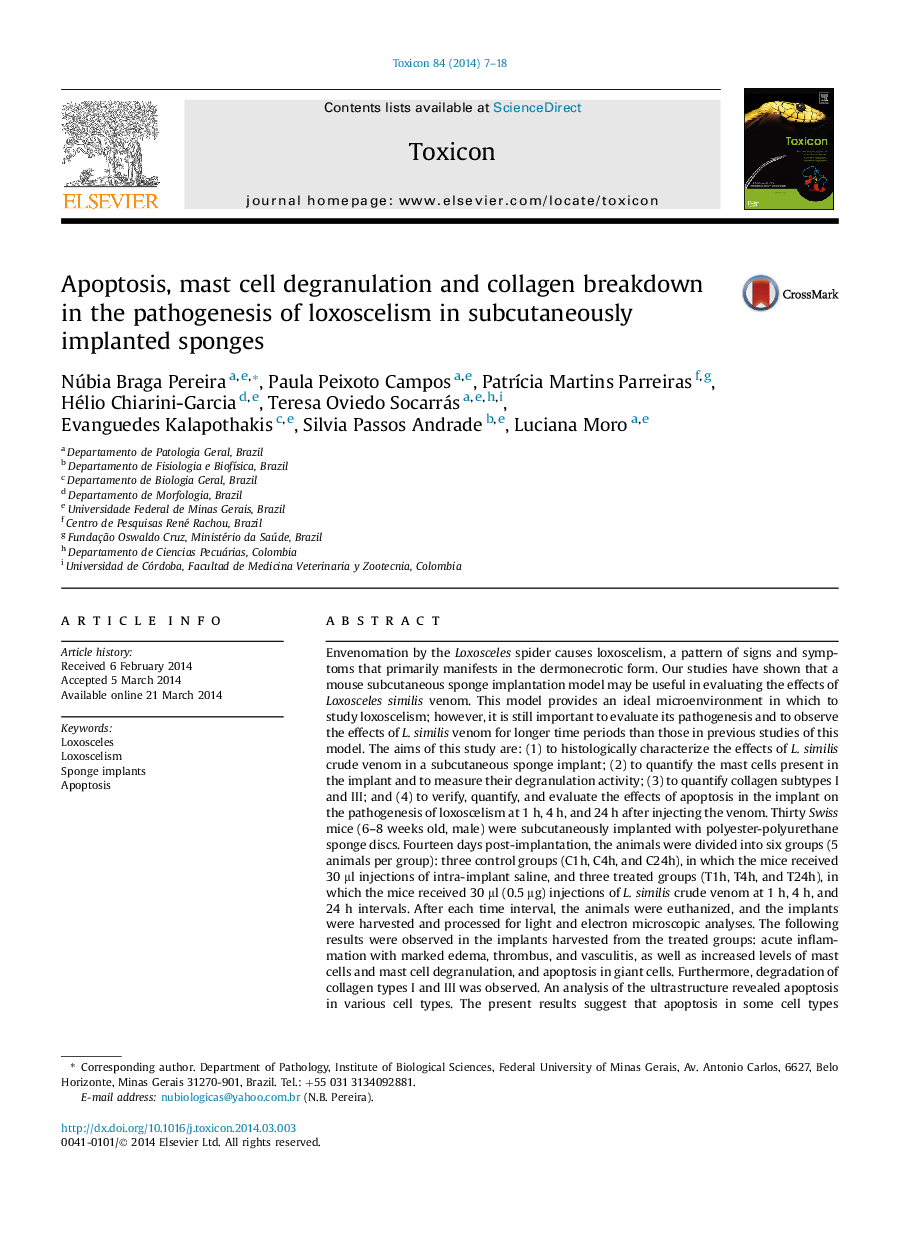| Article ID | Journal | Published Year | Pages | File Type |
|---|---|---|---|---|
| 2064671 | Toxicon | 2014 | 12 Pages |
•We characterized the effects of Loxosceles similis venom in a sponge implant at 24 h after injecting.•We measured the mast cells degranulation activity in the implant at 1, 4, and 24 h after injecting.•We quantified collagen subtypes I and III implant at 1, 4, and 24 h after injecting the venom.•We showed that apoptosis participates in the pathogenesis of loxoscelism.
Envenomation by the Loxosceles spider causes loxoscelism, a pattern of signs and symptoms that primarily manifests in the dermonecrotic form. Our studies have shown that a mouse subcutaneous sponge implantation model may be useful in evaluating the effects of Loxosceles similis venom. This model provides an ideal microenvironment in which to study loxoscelism; however, it is still important to evaluate its pathogenesis and to observe the effects of L. similis venom for longer time periods than those in previous studies of this model. The aims of this study are: (1) to histologically characterize the effects of L. similis crude venom in a subcutaneous sponge implant; (2) to quantify the mast cells present in the implant and to measure their degranulation activity; (3) to quantify collagen subtypes I and III; and (4) to verify, quantify, and evaluate the effects of apoptosis in the implant on the pathogenesis of loxoscelism at 1 h, 4 h, and 24 h after injecting the venom. Thirty Swiss mice (6–8 weeks old, male) were subcutaneously implanted with polyester-polyurethane sponge discs. Fourteen days post-implantation, the animals were divided into six groups (5 animals per group): three control groups (C1h, C4h, and C24h), in which the mice received 30 μl injections of intra-implant saline, and three treated groups (T1h, T4h, and T24h), in which the mice received 30 μl (0.5 μg) injections of L. similis crude venom at 1 h, 4 h, and 24 h intervals. After each time interval, the animals were euthanized, and the implants were harvested and processed for light and electron microscopic analyses. The following results were observed in the implants harvested from the treated groups: acute inflammation with marked edema, thrombus, and vasculitis, as well as increased levels of mast cells and mast cell degranulation, and apoptosis in giant cells. Furthermore, degradation of collagen types I and III was observed. An analysis of the ultrastructure revealed apoptosis in various cell types. The present results suggest that apoptosis in some cell types associated with an increase in mast cell degranulation and the degradation of collagen fibers are important in the pathogenesis of loxoscelism therefore may explain the difficulty in repairing the ulcer is commonly observed in severe cases of loxoscelism cutaneous in humans.
